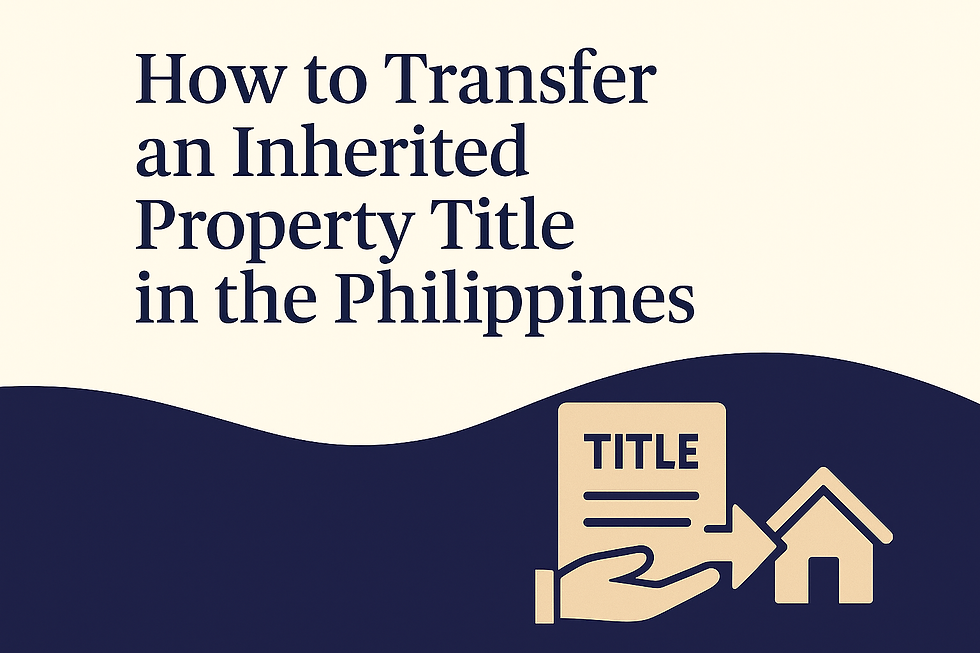Understanding Property Zoning in the Philippines: Why It Matters Before You Buy
- cristino rosales
- Nov 4
- 3 min read
They say buying land is one of the smartest investments you can make — but before you sign anything, there’s one crucial thing to check that many overlook: property zoning.
In the Philippines, every parcel of land has a specific classification that determines how it can be used. Whether you plan to build a home, start a business, or grow a farm, understanding the zoning laws can save you from costly mistakes later on.

What Is Property Zoning?
Property zoning is a legal classification set by your city or municipal planning office that defines how a piece of land can be used. Zoning laws are implemented under the Comprehensive Land Use Plan (CLUP) and approved by the Housing and Land Use Regulatory Board (HLURB) or the Department of Human Settlements and Urban Development (DHSUD).
Common zoning classifications include:
Residential – for homes, apartments, or housing developments
Commercial – for businesses, offices, and retail spaces
Industrial – for factories or warehouses
Agricultural – for farms or crop production
Institutional – for schools, hospitals, or government facilities
Each classification comes with rules on what you can and cannot build, building heights, setbacks, and even environmental restrictions.
Why Zoning Matters Before You Buy
Let’s say you found a beautiful piece of land with a great view — but it’s zoned for agriculture. You can’t build a subdivision or resort on it unless you apply for a reclassification, which can take months and may not even be approved.
Understanding zoning prevents:
✅ Buying land you can’t use as intended
✅ Legal disputes with neighbors or LGUs
✅ Future denial of business permits
It’s your first line of defense as a buyer — and a smart investor always checks zoning first.
How to Check Property Zoning
You can verify the zoning classification of a property by doing the following:
Visit the City or Municipal Planning and Development Office (CPDO or MPDO)
Ask for the Zoning Certificate or Zoning Verification Form.
Provide the exact location or Tax Declaration Number
They’ll check the land’s classification under the Comprehensive Land Use Plan.
Pay a minimal verification fee (usually ₱200–₱500)
Request a map overlay showing the lot’s boundaries and zoning category.
If the property is near a protected area, industrial park, or main highway, it may also be under special zoning ordinances that affect what can be built there.
Can You Change a Land’s Zoning Classification?
Yes — but only under strict conditions. You’ll need to apply for a Reclassification through the Local Government Unit (LGU), which must then be approved by the Sangguniang Panlungsod ng Bayan.
Keep in mind:
The land must be outside protected or environmentally critical areas.
Reclassification is only allowed if it supports local development plans.
You’ll need endorsements from DHSUD and DENR.
It’s a long process, so it’s always better to buy land that’s already zoned for your intended purpose.
Key Takeaway
Before signing that deed of sale or making a down payment, always verify how your property is zoned. A quick visit to the planning office can save you months of headache — and potentially millions in lost investment.
Zoning isn’t just a technicality — it’s the rulebook for land ownership in the Philippines.
Final Thought
Buying or investing in property in the Philippines isn’t just about the price — it’s about understanding the rules that shape what you can do with it. Knowing the zoning laws, transfer process, and taxes helps you make smarter, safer real estate decisions that build lasting value.
Author’s Note
Written by Cris Rosales Jr., founder of A Little Bit of Everything in Life — a digital space where real estate guidance meets practical living.



Comments